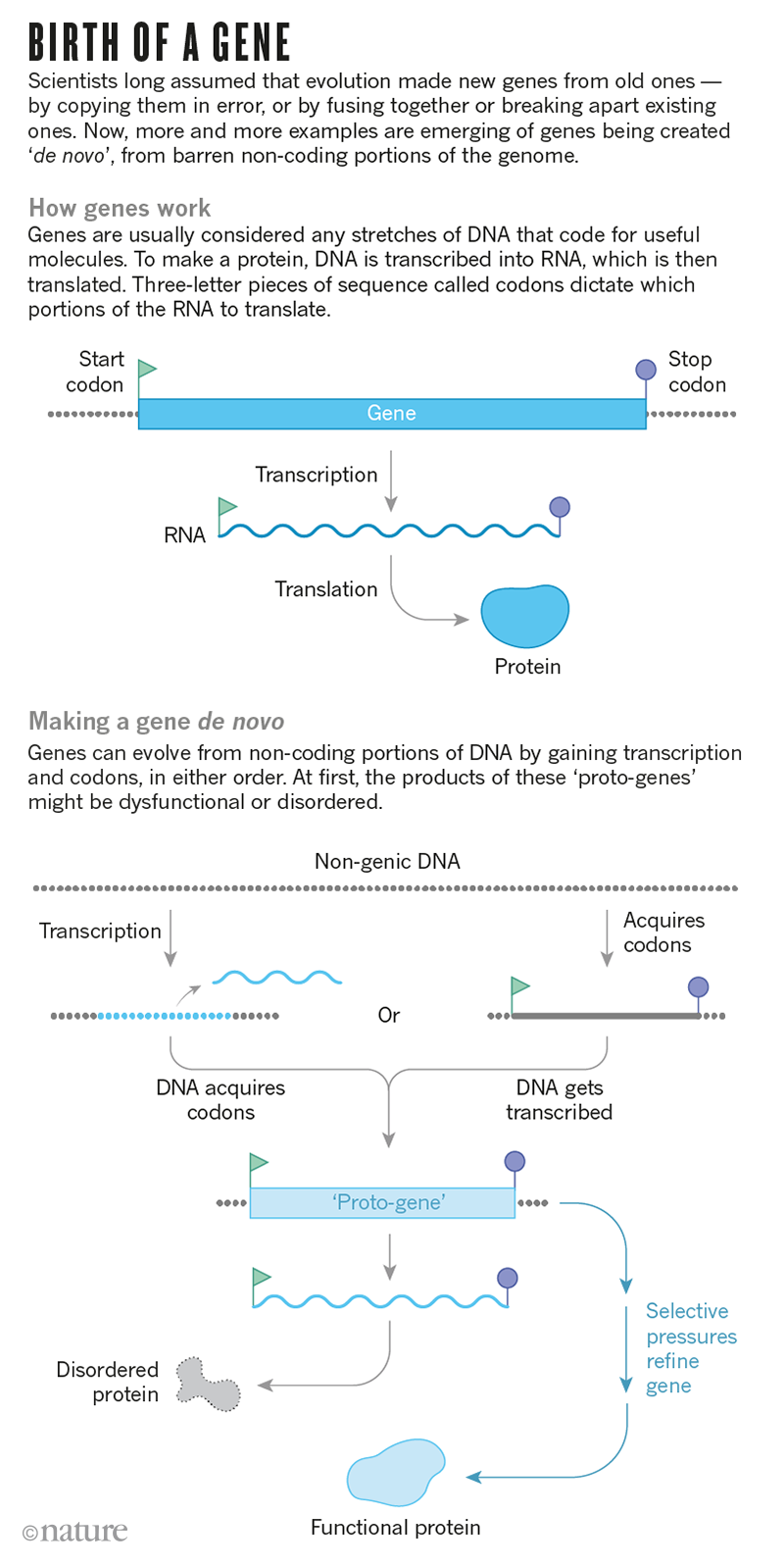Research

Credit: Nik Spencer/Nature
Scientific Impacts
- Our scientific discoveries on new gene evolution led to Manyuan receiving a prestigious award in 2022: the “John Simon Guggenheim Memorial Fellowship for Nature Sciences (Biology).” Manyuan was one of three awardees in the area of biology in the U.S. and Canada. The Guggenheim Foundation has awarded fellowships annually since 1925 to professionals who have demonstrated exceptional ability by publishing a significant body of work in the fields of natural sciences, social sciences, humanities, and the creative arts, excluding the performing arts.
- The American Association for the Advancement of Science (AAAS) summarized my contribution when conferring me with a fellow honor (2014 AAAS Fellow) as “You are being honored: For distinguished contributions to the fields of molecular evolution and genetics, particularly for starting and leading the area of new gene evolution using experimental and computational genomics and molecular biology”.
- Our discovers have helped shape the new chapters and sections about new gene evolution in major textbooks of evolutionary biology (e.g. Douglas Futuyma, 2009 and 2005, Evolution, Sinauer, Massachusetts; Michael Lynch, 2007, The Origins of Genome Architecture, Sinauer, Massachesetts; Wen-Hsiung Li, 1997, Molecular Evolution, Sinauer, Massachusetts; Roderic Page and Edward Holmes, 1998, Molecular Evolution. Blackwell Science London). Nature published a News Feature to highlight our discovery of a large number of de novo genes in Oryza (Levy, 2019. Genes from the Junkyard. Nature 574: 314-316).
- We recently published a review on evolutionary genetics at Nature Genetics, 2025
- Our scientific works have been recorded in ~200 publications of research reports, commentaries, reviews, interviews, and popular science articles with numerous reports of news media.We have also published five books and monographs:
2021. How Do New Genes Originate and Evolve? Genes. With E. Beltran
2020. Walter Gilbert: Selected Works. 614 pages. World Scientific, Singapore. With W. Gilbert.
2019. Evolution of Genes and Genomes. 174 pages. Science China Life Science. With B. Shen
2010. Darwin’s Heritage Today. 385 pages. Higher Education Press. With H. Gu and Z. Zhou
2003. Origin and Evolution of New Gene Functions. Volume 10, Contemporary Issues in Genetics and Evolution. 202 pages. Kluwer Academic Publishers. The Netherlands.
Societal impacts:
- New York Times, Washington Times, Chicago Tribune, Sacramento Bee, The Huffington Post, La Vanguardia, the New Scientist, the Scientist, Discover, La Recherche, Wen Hui Bao, and other news media in US, Europe, and East Asia reported our scientific discoveries and commentaries in multiple languages
- American Scientist published a feature popular science article by us to discuss de novo gene origination (Mortola and Long, 2021. New Genes Born to Junk. May-June Issue)
- Quanta magazine published two interviews with me to discuss de novo gene origination and the evolution of gene essentiality (Callier, 2020. Where do new genes come from? April 9. Callier, 2020. Scientists Find Vital Genes Evolving in Genome’s Junkyard. November 16.)
